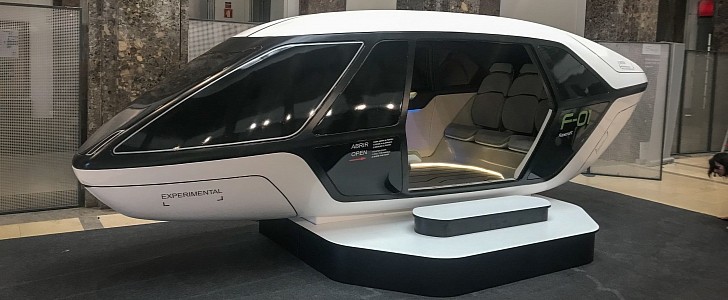From the transport of people to rescue operations, the Flexcraft's module can be swapped to adjust to any situation. This versatile aircraft, which is fully electric, is only 13 meters (43 ft) long and can seat nine passengers.
The project is the result of a Portuguese consortium led by companies and institutions in the fields of industrial design, aeronautical engineering, process engineering, and aircraft manufacturing. They worked together to develop a Short Take Off and Landing (STOL) vehicle featuring a full-size cabin, and capable of being remotely operated.
This year, on January 28th, Instituto Superior Técnico hosted the Flexcraft project, a modular aircraft that allows a reconfiguration of the cabin for different flight scenarios. It could be used as a "multimodal cargo pod" for logistics operations, as "airborne deployment" for search and rescue operations, and as a "hub feeder" for general aviation operations. The fact it can transform allows for reduced ground operating time and increase capacity for intermodality.
Participants were able to see Flexcraft's modularity during the event by viewing a full-scale mockup of the fuselage and cabin through a virtual reality experience.
Last month, on the occasion of winning the International Design Awards (IDA) in the category of Transportation Design, Brazilian aircraft manufacturer Embraer presented its latest design for the STOL.
It features wings that sport different and interchangeable engines and fuselages that enable the machine's function and mission to be quickly modified. The alternative and interchangeable fuselages would allow the aircraft to transport passengers and cargo, offer support for civil protection activities, surveillance, and agriculture.
The Flexcraft is also capable of taking off on short runways and use ecological engines that work with alternative fuels and technologies.
Started in 2016, this futuristic-looking project is still not ready to take flight yet. Although Flexcraft is still in its development phase, the concept, if implemented, could significantly improve the operational flexibility of the groups using it in the future.
This year, on January 28th, Instituto Superior Técnico hosted the Flexcraft project, a modular aircraft that allows a reconfiguration of the cabin for different flight scenarios. It could be used as a "multimodal cargo pod" for logistics operations, as "airborne deployment" for search and rescue operations, and as a "hub feeder" for general aviation operations. The fact it can transform allows for reduced ground operating time and increase capacity for intermodality.
Participants were able to see Flexcraft's modularity during the event by viewing a full-scale mockup of the fuselage and cabin through a virtual reality experience.
Last month, on the occasion of winning the International Design Awards (IDA) in the category of Transportation Design, Brazilian aircraft manufacturer Embraer presented its latest design for the STOL.
It features wings that sport different and interchangeable engines and fuselages that enable the machine's function and mission to be quickly modified. The alternative and interchangeable fuselages would allow the aircraft to transport passengers and cargo, offer support for civil protection activities, surveillance, and agriculture.
The Flexcraft is also capable of taking off on short runways and use ecological engines that work with alternative fuels and technologies.
Started in 2016, this futuristic-looking project is still not ready to take flight yet. Although Flexcraft is still in its development phase, the concept, if implemented, could significantly improve the operational flexibility of the groups using it in the future.









